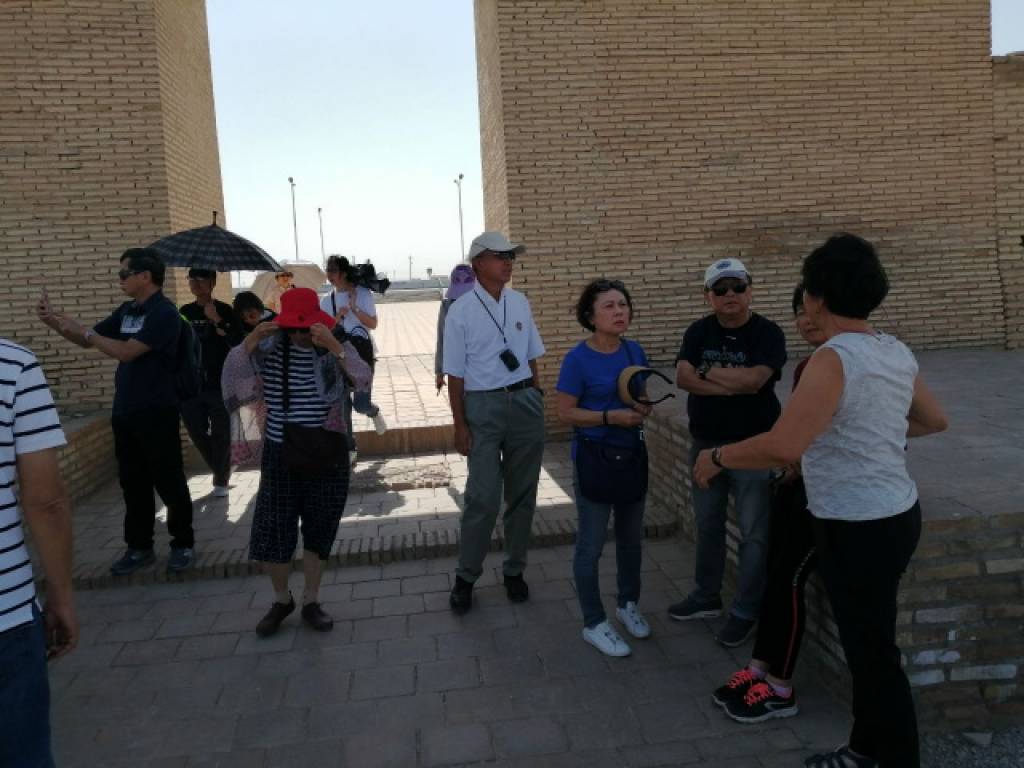Witnesses to Historical Events

Uzbekistan is very popular among tourists. In connection with the 50th anniversary of graduation, 20 classmates from Singapore decided to travel to Uzbekistan.
Uzbekistan is very popular among tourists. In connection with the 50th anniversary of graduation, 20 classmates from Singapore decided to travel to Uzbekistan.
– We are interested in each place associated with the names of the saints and their places of worship, – says one of the tourists of the group Hee Meng. – We came to Uzbekistan after reading books about the Great Silk Road and the country, as the integral part of it. We have already visited Khiva and Samarkand. We got acquainted with the works of art by masters in the manufacture of pottery and embroidering suzane. We heard about the shore of Aydarkul and yurts in the steppe. We are planning to spend the night there. In the meantime, we are enjoying the beauty of Navoi.
Many tourists traveling from Samarkand to Bukhara and back stop near a place, which was once considered the main parking on the Silk Road, in a place where many historical events took place.
This tour group decided to visit Sardoba and Raboti Malik caravanserai located a little further.
In historical chronicles, this area is mentioned more than once in connection with events related to the life of famous commanders and major political leaders.
Now here you can find only some of the fragments of jewelry and the remains of buildings, which enthralled many. But travelers are still interested in this place.
– The Shakh Raboti was built in the 70s of the XI century by Shamsulmulk Nasr ibn Ibrahim, a descendant of the Karakhanids. There is evidence that in the first quarter of the XII century the building was repaired by Arslonkhon Muhammad ibn Suleiman, – said Javlon Khasanov, Head of the Territorial Department for Tourism Development of Navoi region. – During the most difficult archaeological research in the 70s of the XX century, the complex device of this unique structure was revealed. Its architecture is unique. It does not resemble a caravanserai, but a palace of shakhs.
Raboti Malik is located between Bukhara and Samarkand and was built at the junction of the East and West.
The remaining on the other side of the large Sardoba highway was completely preserved. “Sard” in Farsi means “good”, “ob” – “water”. This domed structure was built to store water where it is always in short supply.
The walls of the pond are made of a cylindrical shape from burnt brick, and the water is at a depth of 15-18 meters. One of the authors of the 16th century compared the water of Sardoba with the Zam Zam holy water from Mecca.
Now this water cannot be used, but it is still kept clean. To do this, the front of the pond is surrounded by a wall.
44 Sardobas of Mawarannahr are mentioned in historical information: 29 of them are in Karshi steppe, 3 are in Mirzachul, 3 in Fergana and Tashkent and 1 near Karmana.
It follows that Sardoba was the only source of life in the steppe between Samarkand and Bukhara.
Currently, large-scale activities are underway to add the Raboti Malik and Sardoba to the UNESCO list. Organizational work will be completed in 2020.
Tourists from Singapore took many photos and videos for their friends who could not come with them. Next year they promised to come all together.








